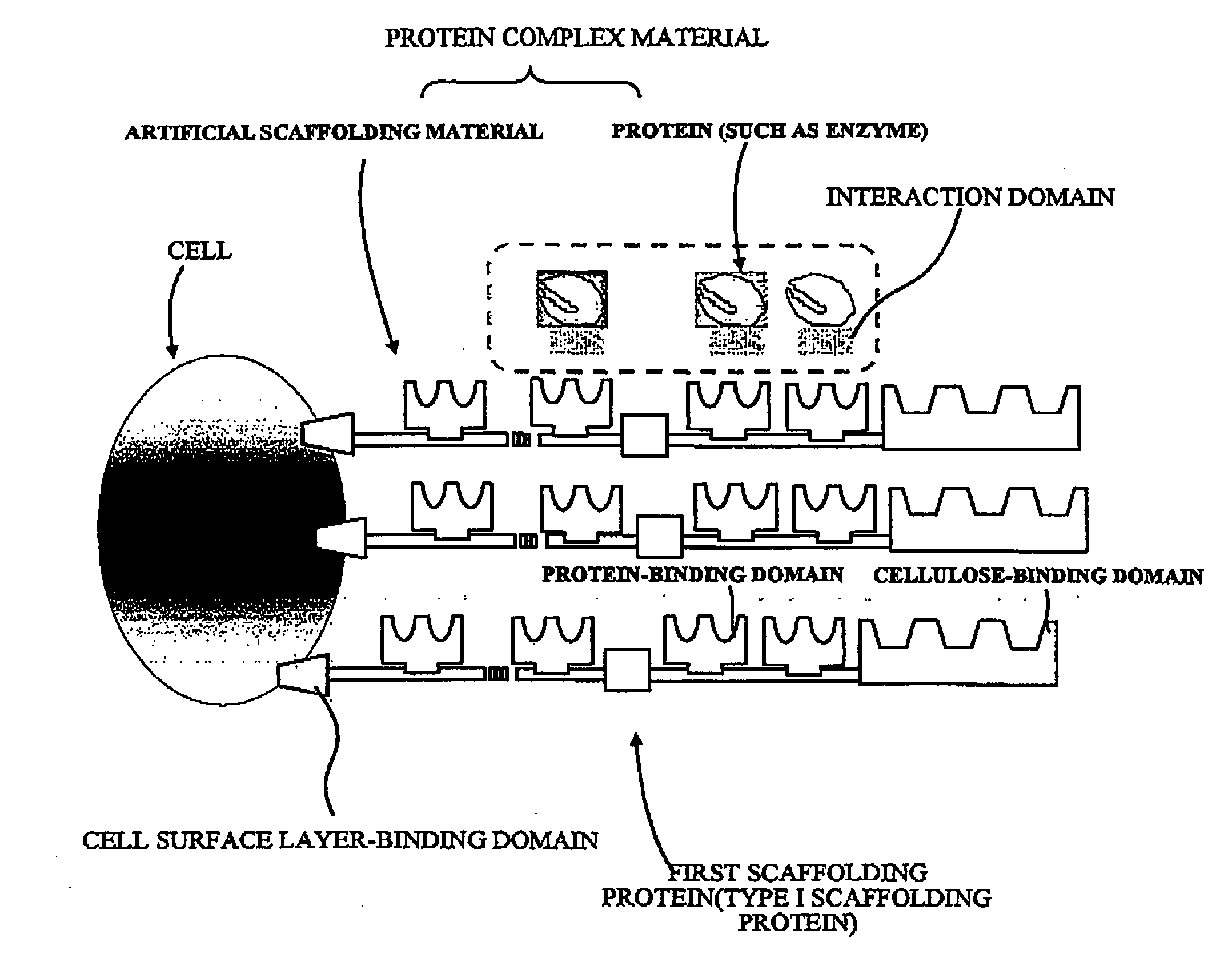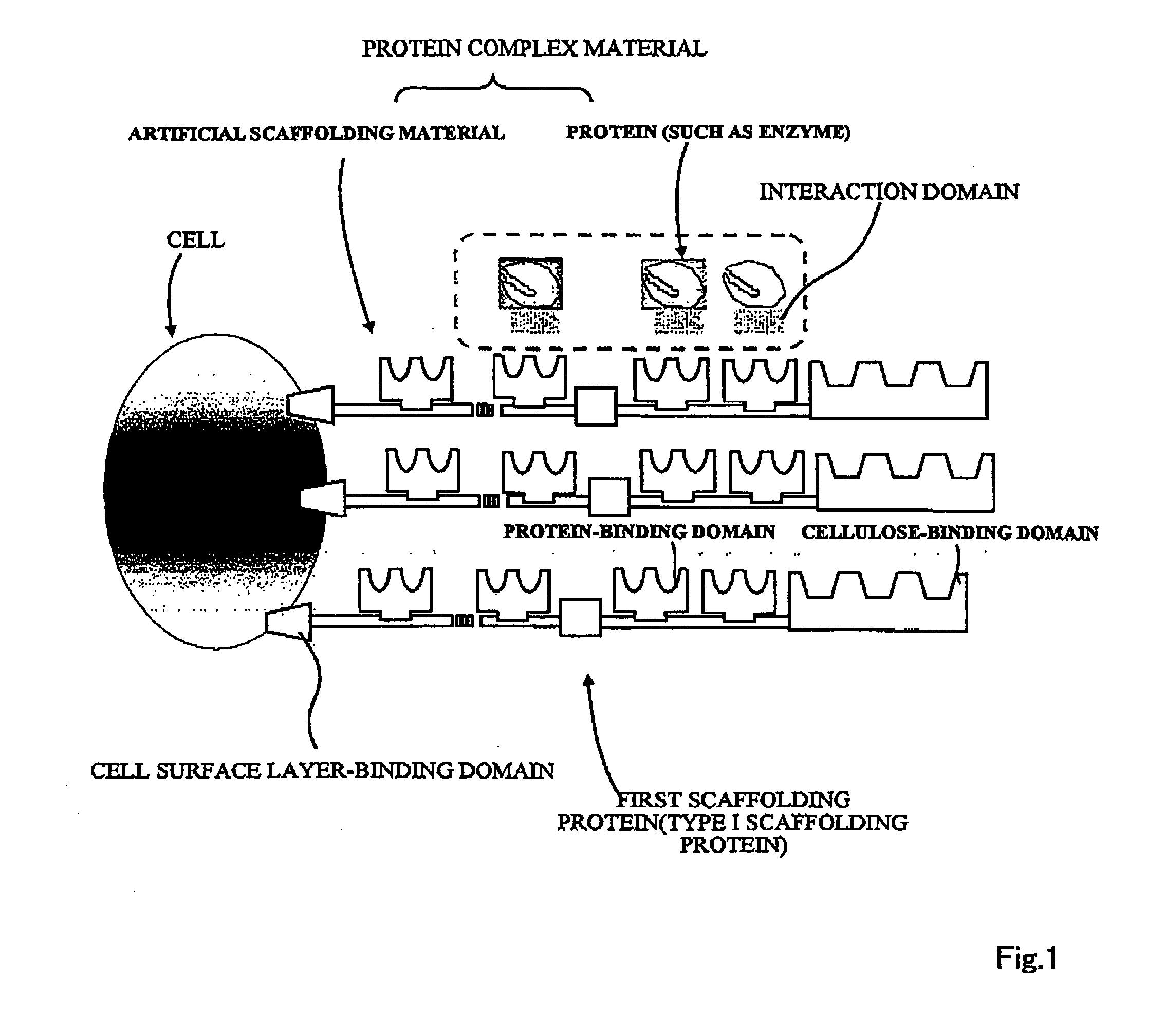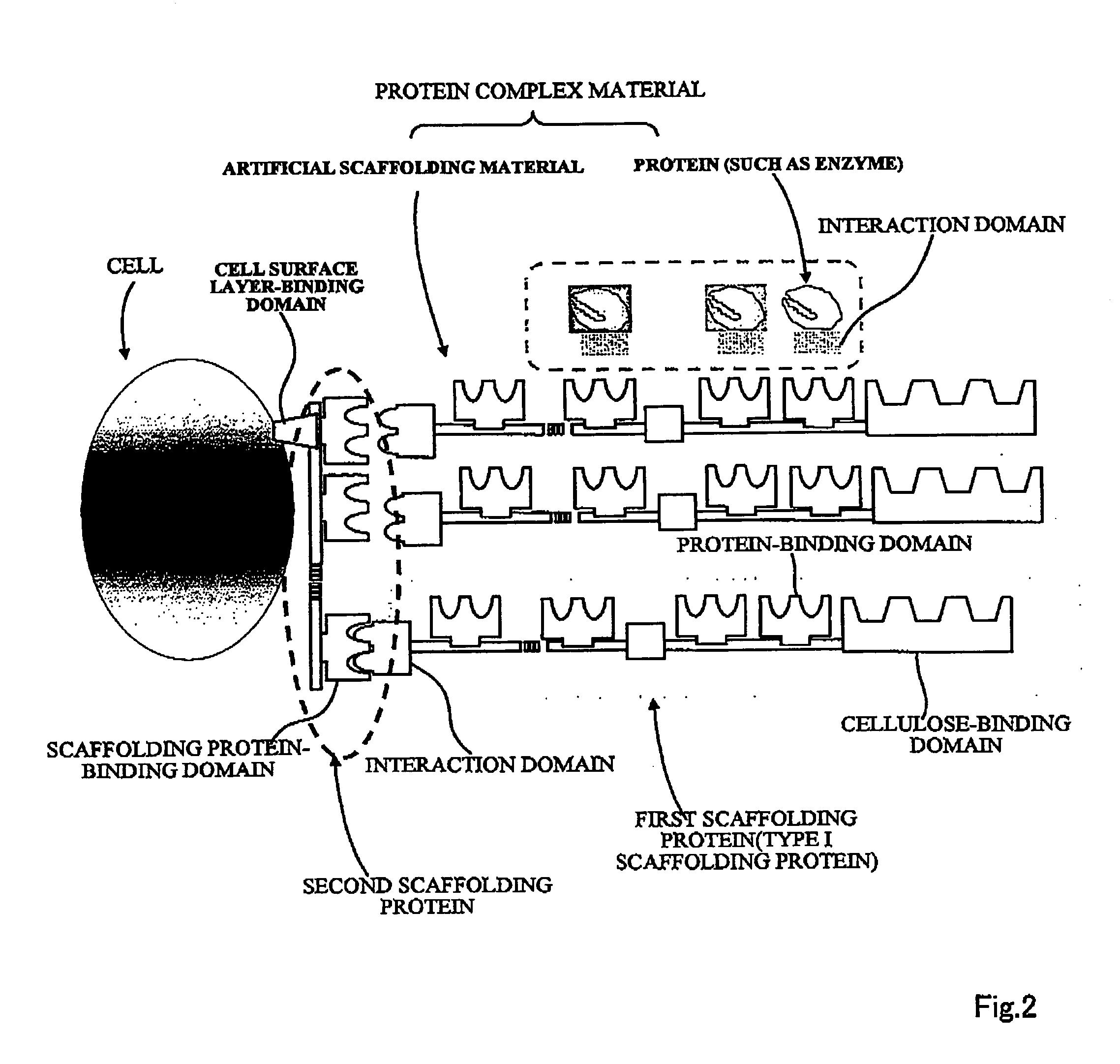Artificial scaffolding material for protein retention and use of the same
a technology of artificial scaffolding and protein, which is applied in the field of artificial scaffolding material for retaining protein, can solve the problem that the cell may not have the ability to produce proteins, and achieve the effect of retaining protein and retaining protein
- Summary
- Abstract
- Description
- Claims
- Application Information
AI Technical Summary
Problems solved by technology
Method used
Image
Examples
example 1
Acquisition DNA Fragments Coding for the First Scaffolding Protein and the Second Scaffolding Protein
[0140]In the present example, cloning of a DNA fragment coding for a scaffolding protein derived from Clostridium thermocellum (C. thermocellum; hereinafter may be simply called Ct) was carried out. First, the genome was extracted from Ct ATCC27405. The structure of the CipA gene coding for the CipA protein (NCBI home page, Accession No.: L08665), which is a Type I scaffolding protein (corresponding to the first scaffolding protein of the present invention), is shown in FIG. 3. For this CipA gene, DNA fragments containing each portion of the genome such as those shown in FIG. 3 (each portion of CBD (cellulose-binding domain)+one Type I cohesin (Coh3), two (Coh3 and 4) and seven (Coh3 to Coh9)) were synthesized. That is to say, based on the DNA sequences of each portion of these genomes (the database and Accession No.), suitable primers were designed and various DNA fragments were acq...
example 2
Synthesis of Endoglucanase in a Cell-Free System
[0142]In the present example, from the genome of Ct ATCC27405, suitable primers were designed based on the DNA sequence of the CelA gene, which is an endoglucanase gene (NCBI home page, Accession No.: K03088), after amplification by the PCR method according to the art, a CelA gene fragment was cloned. Note that the CelA gene has at the C-terminal side thereof a Type I dockerin which is an interaction domain with Type I cohesin. The cloned CelA gene fragment was inserted into a pET-23b vector (Novagen), the region from the T7 promoter to the terminator containing the CelA gene was amplified by the PCR method, to serve as the template in a cell-free synthesis. Synthesis of CelA was carried out by reaction in a cell-free solution, at 25° C., for five hours. Note that the cell-free synthesis was carried out using the WAKO PURE system (manufactured by Wako Pure Chemical Industries), according to the protocol thereof.
example 3
Expression of the First Scaffolding Protein or the Second Scaffolding Protein on the Yeast Surface Layer
[0143]In the present example, each gene fragment acquired in Example 1 was inserted into the pYD1 vector (Invitrogen) in a form that added a His-tag at the respective C-termini, and these were used to carry out transformation of the yeast S. cerevisiae EBY100. Each transformed strain was cultured using a YNB+0.5% casamino acid+2% glucose culture medium, at 30° C., when OD600=2 was exceeded, the yeast was harvested, then, was used to inoculate a YNB+0.5% casamino acid+2% galactose culture medium so as to obtain OD600=0.5, and induced expression was carried out at 30° C. for 48 hours. Thereafter, 1 ml of fungal body at OD600=1, was washed with 1 ml of PBS, and suspended in 125 μl of PBS. To this suspension, 0.5 μg of anti-His-tag antibody as the primary antibody and 1 mg / ml final concentration of BSA were added, the suspension was left to stand in ice for 30 minutes, and suspended f...
PUM
| Property | Measurement | Unit |
|---|---|---|
| pH | aaaaa | aaaaa |
| temperature | aaaaa | aaaaa |
| temperature | aaaaa | aaaaa |
Abstract
Description
Claims
Application Information
 Login to View More
Login to View More - R&D
- Intellectual Property
- Life Sciences
- Materials
- Tech Scout
- Unparalleled Data Quality
- Higher Quality Content
- 60% Fewer Hallucinations
Browse by: Latest US Patents, China's latest patents, Technical Efficacy Thesaurus, Application Domain, Technology Topic, Popular Technical Reports.
© 2025 PatSnap. All rights reserved.Legal|Privacy policy|Modern Slavery Act Transparency Statement|Sitemap|About US| Contact US: help@patsnap.com



